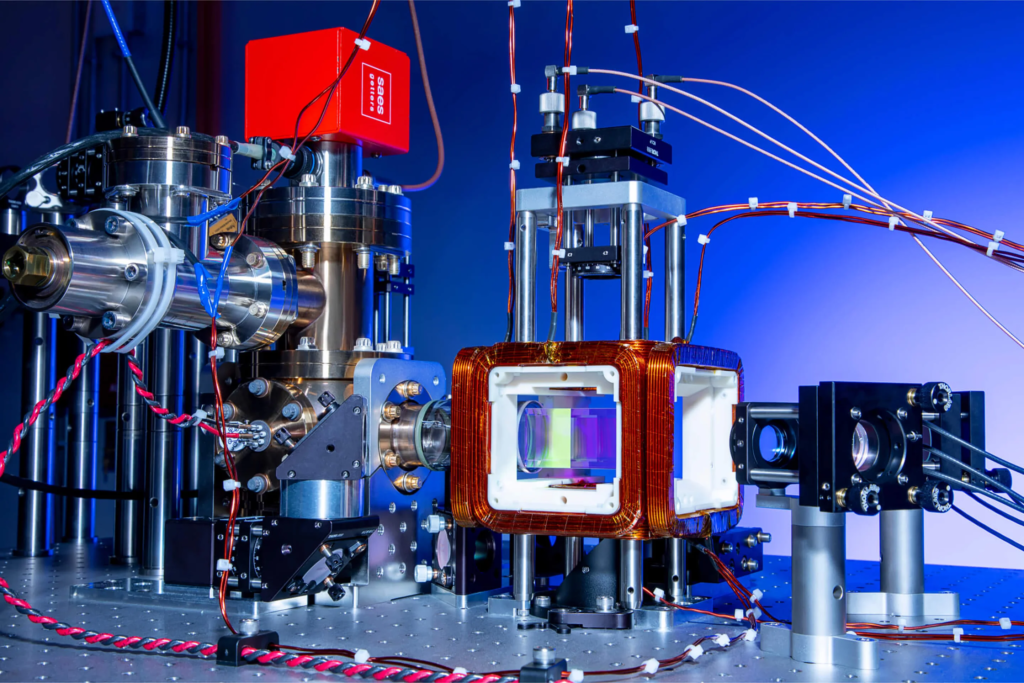A major leap toward the quantum internet has taken place as researchers from Denmark and Germany announced a key breakthrough involving erbium-silicon chip technology. This innovation could enable ultra-secure, high-speed quantum networks to become reality in the coming years.
The collaboration involves top-tier institutions including the Technical University of Denmark (DTU) and Germany’s University of Stuttgart. These teams are working together to develop scalable components that will allow quantum information to travel long distances through existing optical fiber infrastructure.
Their focus is on embedding erbium atoms in silicon chips, which produce light at the same wavelength used in current telecom networks—an essential feature for real-world application.
Source: Technical University of Denmark – DTU Quantum
What Is the Quantum Internet?
The quantum internet is an emerging form of communication that uses quantum signals instead of traditional electrical signals to transfer data. Unlike today’s internet, which can be intercepted or hacked, quantum internet promises unhackable communication through a phenomenon called quantum entanglement.

In such a system, quantum bits (qubits) are entangled, meaning the state of one is dependent on the state of the other—no matter the distance. If perfected, this will enable secure communication, advanced encryption, and powerful quantum computing networks.
But one of the biggest challenges so far has been scalability and integration into existing systems.
The Role of Erbium in Quantum Chips
The core of this new technology is erbium, a rare-earth element known for its ability to emit light at telecom-friendly wavelengths (around 1.55 micrometers). This is the same frequency used in fiber-optic cables worldwide.
By integrating erbium atoms into silicon chips, researchers have achieved a unique combination—quantum functionality within a scalable and established material.
Silicon is the backbone of modern electronics. If quantum technologies can run on silicon platforms, the transition to real-world use becomes much more viable and cost-effective.
Read more about silicon photonics and quantum computing
Why This Matters for the Future of the Internet
For quantum internet to become practical, the system must send quantum signals (often in the form of photons) over long distances without losing coherence. The erbium-silicon chip allows these photons to be emitted and received in a stable, controlled way—at room temperature.
Until now, most quantum communication systems required ultra-cold environments or bulky, expensive equipment. The Danish-German chip, however, works under standard conditions and could easily be integrated into existing fiber-optic networks.
This drastically lowers the cost and increases the potential speed of deployment.
A True International Collaboration
This research effort showcases how cross-border collaboration can accelerate technological progress. The Danish Quantum Technology Centre and Stuttgart’s 3rd Physics Institute have pooled resources and expertise in quantum optics, chip fabrication, and photon emission control.
The researchers have already published preliminary results showing single-photon generation, stable qubit readouts, and quantum coherence preservation over multiple milliseconds—a key step in real-time quantum communication.
Official Stuttgart University announcement
What Comes Next?
The next steps involve integrating these erbium-silicon chips into larger quantum network testbeds. Initial pilot tests in controlled labs will soon give way to field trials, potentially involving cities in Denmark and Germany.

The aim is to build a network of quantum nodes—each containing a quantum chip—that can communicate securely and instantly using quantum principles.
In parallel, the teams are working on improving the quantum memory of the chips, allowing them to store and forward quantum information more effectively.
Potential Real-World Applications
Secure Government Communication: Quantum encryption ensures messages cannot be read or copied by third parties.
Financial Data Protection: Banks and financial institutions could use quantum networks for real-time fraud-proof transfers.
Scientific Collaboration: Quantum internet will allow real-time syncing of massive scientific datasets across countries.
Next-Gen Internet Services: With near-instant data transmission, streaming, gaming, and telemedicine may be revolutionized.
Global Race for Quantum Supremacy
The Danish-German advancement adds pressure to the global race for quantum leadership, where countries like the USA, China, and the Netherlands are also investing heavily. Each is striving to build the first functioning, scalable, and secure quantum network.
The European Union has also invested over €1 billion in quantum research under its Quantum Flagship program, aiming to establish Europe as a global leader in this domain.
Final Thoughts
The quantum internet may still be in its infancy, but breakthroughs like this Danish-German chip signal that the dream is moving closer to reality. By combining advanced material science, telecom compatibility, and international teamwork, the groundwork is being laid for a new era of communication—faster, smarter, and unhackably secure.
This erbium-silicon chip may not just be a scientific achievement—it could be the key that unlocks the quantum internet revolution.
Also Read – Microsoft 365 vs Google Workspace: AI Agents Battle Begins






